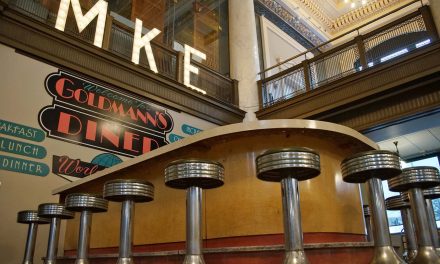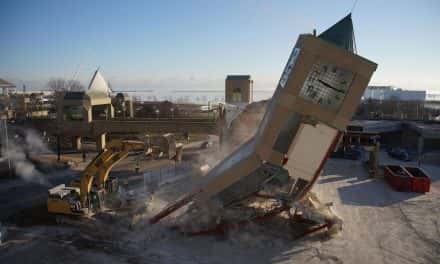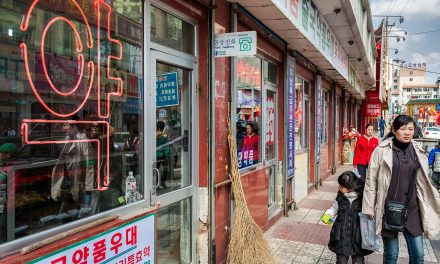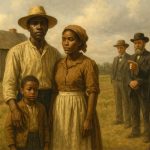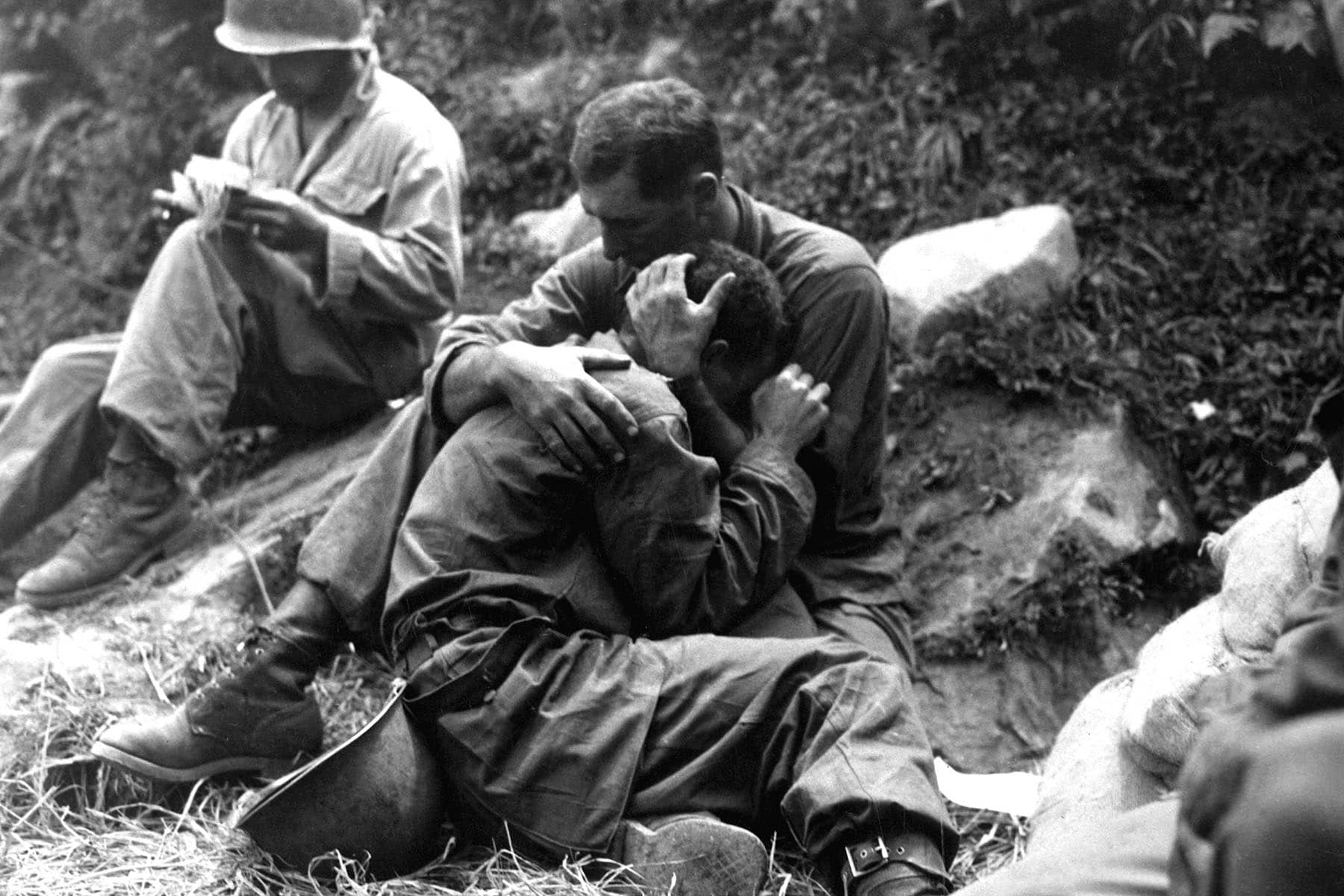
On June 25, 1950, the Korean Peninsula became engulfed in conflict as North Korean troops crossed the 38th parallel, initiating the Korean War. But for most Americans, including families living in Milwaukee, images of what was happening rarely if ever entered their awareness.
The invasion, orchestrated by the Soviet-backed North Korean government, marked the beginning of a brutal three-year conflict that would involve numerous countries. The Milwaukee public, like people in many other American cities, was suddenly and deeply intertwined with a conflict it did not comprehend.
“At 4 o’clock on Sunday morning, June 25, 1950, South Korean villages awaken to a world suddenly filled with noise and flames. The night sky is illuminated by blinding bursts of gunfire. North Korean Communists, emboldened by the success of small raids across the 38th parallel into South Korea, launch an undeclared all-out war to make the entire country a Communist state.” – Associated Press, Newswire
Emphasizing the threat of Communist expansion, President Harry S. Truman answered South Korea’s request to the U.N. for protection by committing U.S. military air and sea forces to the conflict without a formal declaration of war from Congress.
President Truman famously referred to the situation as a “police action,” reinforcing the idea that the U.S. was participating in a limited engagement aimed at restoring order rather than engaging in a full-scale war.
“Red forces attack the city of Seoul, and by June 28, 1950, it is in Communist hands. R.O.K. President Syngman Rhee and his government are evacuated. By June 30th the Communist troops, well fortified with Russian-made tanks, have driven south and are moving rapidly on into Suwon, whose citizens are fleeing further south. South Korean troops rushed north to try and stop the enemy advances. The only air force available for R.O.K. defense is the Korean-American Volunteer Group, with just 10 planes.” – Associated Press, Newswire
Milwaukee, and Wisconsin, played a significant role in the battles that followed. Young men from the city were drafted or volunteered to serve in the conflict, which translated to them actually fighting in a war. Many were the younger brothers of veterans returning just a handful of years earlier from World War II.
Wisconsin had an estimated 132,000 individuals who served during the Korean War era, ranking it as the 10th in the nation. As of 2020, the state’s Korean War veteran population stood at 23,812, which was 9.7% of the population over 80 years old.
Those numbers have declined since the census was recorded, but the available data still reflects the substantial contribution of Milwaukeeans to the war effort, both on the battlefield and through support roles.
The Medal of Honor for extraordinary acts of valor was awarded to 5 soldiers from Wisconsin. The state also lost 801 lives during the Korean War, with 233 from Milwaukee County. The totals are combined from those who were killed in action (KIA), died of wounds (DOW), died while missing (DWM), and died while captured (DWC).
Local newspapers at the time, the “Milwaukee Journal” and the “Milwaukee Sentinel,” often featured stories on the heroism and tragic deaths of Milwaukee’s servicemen. The articles provided very little details about the war and its condition, but did publish regular updates about the personal stories of soldiers, and the grief-stricken responses of their families when they received the tragic news.
Most families in Milwaukee, like many across the United States, may have followed the news about developments in the war but rarely saw photos of the war itself. Images of military officials and dignitaries involved in the peace talks dominated the small visual narrative in the early 1950s.
Unlike the highly publicized World War II and Vietnam War, media coverage from the frontlines of Korea was limited. Many news outlets simply did not prioritize extensive photojournalism from the remote and mostly rural battlefields.
As an occupied peninsula for decades, Korea’s long isolation also contributed to having fewer points of access for international media. To remedy that problem, the U.N. Command developed a strategic initiative known as the “press train” to improve the distribution network for news.
Its creation allowed the military to manage the delicate balance between press freedom and military control in volatile war zones. The specially designated train served as a mobile hub for journalists and war correspondents, ferrying them from the relatively safe environs of Seoul to the gritty and chaotic sites where the conflict unfolded.
By providing a controlled mode of transportation, the military ensured that journalists could safely report on the war while minimizing their exposure to the dangers of the battlefield. But it also meant that by the time the train arrived, photojournalists could not document the situation as it unfolded.
The press train was more than just a vehicle, it was a microcosm of wartime logistics and media relations. Journalists found essential support like food, accommodations, and communication facilities onboard that allowed them to file stories under challenging conditions. The arrangement also enabled the U.S. military to steer the narrative by controlling where journalists went and what they saw, allowing them to shape public perception of the conflict.
The dissemination of wartime information included photographs. In the 1950s, the technology for circulating pictures in real time was not as advanced as it would become just a few years later in Vietnam. That combined with the limited scope of the Korean War, compared to the previous two World Wars which covered more territory and often in landmark urban areas.
Additionally, many images taken during the war were classified or censored to prevent sensitive information from reaching the enemy or the American public. When photographs were published, they were primarily shared through media channels like newspapers and magazines but had to compete for limited space.
Newspapers in Milwaukee and other cities often focused more on domestic issues and local events rather than international conflicts. The war’s impact was abstract and distant for many families, leading to less demand for visual documentation.
Some soldiers took personal photos during the war, but they were usually kept private and shared only within families and close circles. Such personal snapshots rarely made it into the public domain or local news.
Sadly, the Korean War did not capture the American public’s imagination and attention to the same extent as other conflicts. Without widespread public interest, there was less pressure on media outlets to provide extensive photographic coverage.
Many wartime photographs were archived and stored away, becoming accessible to the public only decades later. The post-World War II era was marked by a desire to return to normalcy and focus on peacetime prosperity. The grim realities of another war were something many in Milwaukee preferred to avoid during the early 1950s.
The Korean War, still referred to as “The Forgotten War,” holds a significant place in global history, even if few iconic images live in the public’s memory. It was the first major conflict of the Cold War era, setting the stage for future confrontations between Communist and Democratic forces. The war’s impact extended far beyond the Korean Peninsula, influencing U.S. foreign policy and military strategy for decades.
Milwaukee’s connection to the Korean War is a story of sacrifice, resilience, and enduring respect, but few visuals. As the city continues to honor its veterans, the legacy of the Korean War remains a vital part of Milwaukee’s history, and offers a reminder of how global events can reach the very doors of local neighborhoods.
MI Staff (Korea)
Morning Calm Weekly Newspaper Photo Archive (CC BY-NC-ND 2.0), Associated Press, Everett Collection (via Shutterstock), and U.S. Department of Defense
- Exploring Korea: Stories from Milwaukee to the DMZ and across a divided peninsula
- A pawn of history: How the Great Power struggle to control Korea set the stage for its civil war
- Names for Korea: The evolution of English words used for its identity from Gojoseon to Daehan Minguk
- SeonJoo So Oh: Living her dream of creating a "folded paper" bridge between Milwaukee and Korean culture
- A Cultural Bridge: Why Milwaukee needs to invest in a Museum that celebrates Korean art and history
- Korean diplomat joins Milwaukee's Korean American community in celebration of 79th Liberation Day
- John T. Chisholm: Standing guard along the volatile Korean DMZ at the end of the Cold War
- Most Dangerous Game: The golf course where U.S. soldiers play surrounded by North Korean snipers
- Triumph and Tragedy: How the 1988 Seoul Olympics became a battleground for Cold War politics
- Dan Odya: The challenges of serving at the Korean Demilitarized Zone during the Vietnam War
- The Korean Demilitarized Zone: A border between peace and war that also cuts across hearts and history
- The Korean DMZ Conflict: A forgotten "Second Chapter" of America's "Forgotten War"
- Dick Cavalco: A life shaped by service but also silence for 65 years about the Korean War
- Overshadowed by conflict: Why the Korean War still struggles for recognition and remembrance
- Wisconsin's Korean War Memorial stands as a timeless tribute to a generation of "forgotten" veterans
- Glenn Dohrmann: The extraordinary journey from an orphaned farm boy to a highly decorated hero
- The fight for Hill 266: Glenn Dohrmann recalls one of the Korean War's most fierce battles
- Frozen in time: Rare photos from a side of the Korean War that most families in Milwaukee never saw
- Jessica Boling: The emotional journey from an American adoption to reclaiming her Korean identity
- A deportation story: When South Korea was forced to confront its adoption industry's history of abuse
- South Korea faces severe population decline amid growing burdens on marriage and parenthood
- Emma Daisy Gertel: Why finding comfort with the "in-between space" as a Korean adoptee is a superpower
- The Soul of Seoul: A photographic look at the dynamic streets and urban layers of a megacity
- The Creation of Hangul: A linguistic masterpiece designed by King Sejong to increase Korean literacy
- Rick Wood: Veteran Milwaukee photojournalist reflects on his rare trip to reclusive North Korea
- Dynastic Rule: Personality cult of Kim Jong Un expands as North Koreans wear his pins to show total loyalty
- South Korea formalizes nuclear deterrent strategy with U.S. as North Korea aims to boost atomic arsenal
- Tea with Jin: A rare conversation with a North Korean defector living a happier life in Seoul
- Journalism and Statecraft: Why it is complicated for foreign press to interview a North Korean defector
- Inside North Korea’s Isolation: A decade of images show rare views of life around Pyongyang
- Karyn Althoff Roelke: How Honor Flights remind Korean War veterans that they are not forgotten
- Letters from North Korea: How Milwaukee County Historical Society preserves stories from war veterans
- A Cold War Secret: Graves discovered of Russian pilots who flew MiG jets for North Korea during Korean War
- Heechang Kang: How a Korean American pastor balances tradition and integration at church
- Faith and Heritage: A Pew Research Center's perspective on Korean American Christians in Milwaukee
- Landmark legal verdict by South Korea's top court opens the door to some rights for same-sex couples
- Kenny Yoo: How the adversities of dyslexia and the war in Afghanistan fueled his success as a photojournalist
- Walking between two worlds: The complex dynamics of code-switching among Korean Americans
- A look back at Kamala Harris in South Korea as U.S. looks ahead to more provocations by North Korea
- Jason S. Yi: Feeling at peace with the duality of being both an American and a Korean in Milwaukee
- The Zainichi experience: Second season of “Pachinko” examines the hardships of ethnic Koreans in Japan
- Shadows of History: South Korea's lingering struggle for justice over "Comfort Women"
- Christopher Michael Doll: An unexpected life in South Korea and its cross-cultural intersections
- Korea in 1895: How UW-Milwaukee's AGSL protects the historic treasures of Kim Jeong-ho and George C. Foulk
- "Ink. Brush. Paper." Exhibit: Korean Sumukhwa art highlights women’s empowerment in Milwaukee
- Christopher Wing: The cultural bonds between Milwaukee and Changwon built by brewing beer
- Halloween Crowd Crush: A solemn remembrance of the Itaewon tragedy after two years of mourning
- Forgotten Victims: How panic and paranoia led to a massacre of refugees at the No Gun Ri Bridge
- Kyoung Ae Cho: How embracing Korean heritage and uniting cultures started with her own name
- Complexities of Identity: When being from North Korea does not mean being North Korean
- A fragile peace: Tensions simmer at DMZ as North Korean soldiers cross into the South multiple times
- Byung-Il Choi: A lifelong dedication to medicine began with the kindness of U.S. soldiers to a child of war
- Restoring Harmony: South Korea's long search to reclaim its identity from Japanese occupation
- Sado gold mine gains UNESCO status after Tokyo pledges to exhibit WWII trauma of Korean laborers
- The Heartbeat of K-Pop: How Tina Melk's passion for Korean music inspired a utopia for others to share
- K-pop Revolution: The Korean cultural phenomenon that captivated a growing audience in Milwaukee
- Artifacts from BTS and LE SSERAFIM featured at Grammy Museum exhibit put K-pop fashion in the spotlight
- Hyunjoo Han: The unconventional path from a Korean village to Milwaukee’s multicultural landscape
- The Battle of Restraint: How nuclear weapons almost redefined warfare on the Korean peninsula
- Rejection of peace: Why North Korea's increasing hostility to the South was inevitable
- WonWoo Chung: Navigating life, faith, and identity between cultures in Milwaukee and Seoul
- Korean Landmarks: A visual tour of heritage sites from the Silla and Joseon Dynasties
- South Korea’s Digital Nomad Visa offers a global gateway for Milwaukee’s young professionals
- Forgotten Gando: Why the autonomous Korean territory within China remains a footnote in history
- A game of maps: How China prepared to steal Korean history to prevent reunification
- From Taiwan to Korea: When Mao Zedong shifted China’s priority amid Soviet and American pressures
- Hoyoon Min: Putting his future on hold in Milwaukee to serve in his homeland's military
- A long journey home: Robert P. Raess laid to rest in Wisconsin after being MIA in Korean War for 70 years
- Existential threats: A cost of living in Seoul comes with being in range of North Korea's artillery
- Jinseon Kim: A Seoulite's creative adventure recording the city’s legacy and allure through art
- A subway journey: Exploring Euljiro in illustrations and by foot on Line 2 with artist Jinseon Kim
- Seoul Searching: Revisiting the first film to explore the experiences of Korean adoptees and diaspora























































































































